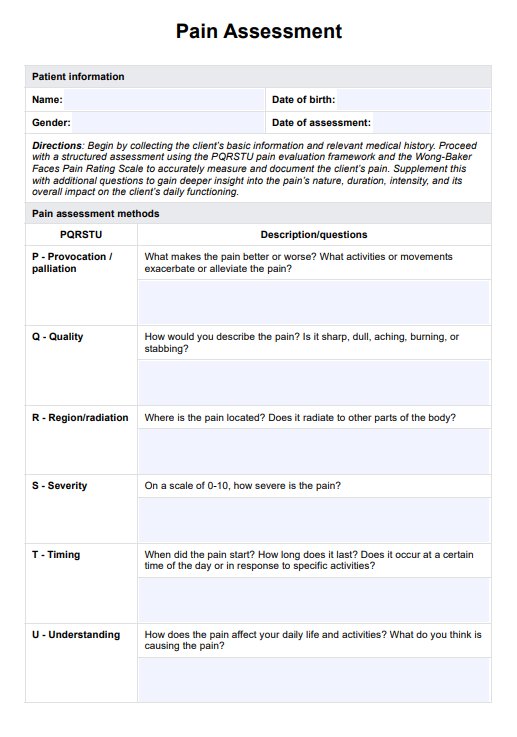Pain assessment is popular because it is a critical part of medical care. It helps healthcare professionals develop an appropriate treatment plan that addresses the individual's unique pain experience and needs.

Pain Assessment
Learn how to assess pain with our Pain Assessment tools. Download a free PDF and follow our step-by-step guide to assess pain accurately.
Pain Assessment Template
Commonly asked questions
Pain Assessment tools are not scored. Instead, they provide information about the individual's pain experience, including its location, quality, severity, timing, and any factors that may aggravate or alleviate the pain.
Various pain assessment tools are available; different individuals or organizations may have created other tools. However, the concept of pain assessment has been around for centuries and has evolved. Today, pain assessment is an essential part of medical care. Many healthcare professionals use pain assessment tools to gather information about an individual's pain experience and develop an appropriate treatment plan.
EHR and practice management software
Get started for free
*No credit card required
Free
$0/usd
Unlimited clients
Telehealth
1GB of storage
Client portal text
Automated billing and online payments











